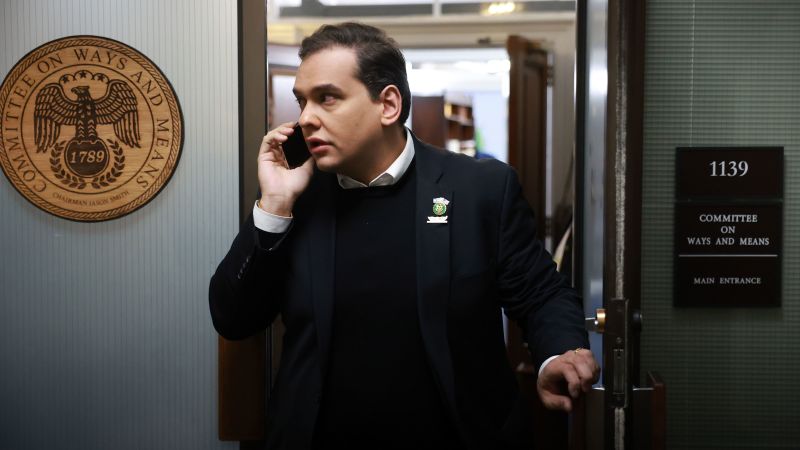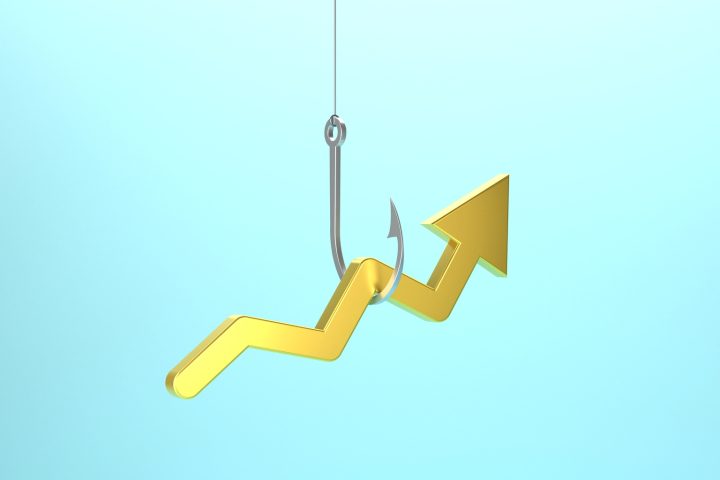I have been writing on Seeking Alpha for just over a year, but I’ve been writing about investing since 1998. During the last 12 months, I’ve responded to nearly every comment and question that has come in... more than 1,200 of them. And based on those comments, questions and often pointed observations and criticisms of my opinions, I have and will continue to write about what I see as the “FAQ” (frequently asked questions) I receive.
What I have heard from many commenters and my investment strategist peers is that today’s investor, more than anything else, wants two things from us:
* Explain your process, so they can see if they identify with it. If so, they’ll want to hear what you say, when you say it, and then decide for themselves if and how to apply it.
* Don’t just say it, show it. Prove that you stand behind what you say and think, right or wrong (and let’s face it, any experienced investor who isn’t wrong a lot just isn’t really an experienced investor). The format here, not to mention personal privacy, limits what any contributor/analyst/professional investor can show and discuss, but there’s a lot that can be shared to a broad audience.
T-bills and ETFs and options, oh my (portfolio)!
So below, I provide some details about how my own assets are allocated, then focus on the part of the portfolio I only allude to in most articles: My option portfolio. I explain what I own now and why I own it, and what it says about my current market views, and more importantly, the key facets of my investment approach, honed over 30 years in the trenches, so to speak.
I write primarily about market strategy, ETFs and the model portfolios I maintain (and invest in myself). But more recently, I’ve added a short-term trading component to my own investing, something I did not have time to do or a ton of experience with while I was running an advisory practice for 27 years. I sold that practice in 2020 and that ushered in a new “era” of trying to capitalize on the things I’ve seen as a chartist for 43 years, advisory for three decades and market student as long as I can remember. And while I believe ETFs are an amazing, enlightening and empowering tool for self-directed investors, they’re not 100% of my portfolio.
I also believe that any investment can go up in value at any time. The difference between this ETF and that ETF, or stocks or bonds or commodities, is the risk of major loss that investment carries with it. I determine that based on price trends, macro analysis and all of the other aspects of applying my years of this stuff, as detailed in many past Seeking Alpha articles.
Those are my “ground rules.” Now, based on that, here is how I apply it all in the form of a family portfolio, divided into four parts, or “buckets” if you will.
I divide my own wealth into four major buckets:
1. “The gift from the Fed” – A big chunk of assets in US Treasuries, purchased directly through a brokerage account, using my own analysis of the yield curve, passive income goals and some neat bond portfolio building tools my brokerage account has.
2. “Offense + Defense” ETF portfolios – I run three of them, with two, four and seven ETFs in them at a time, respectively. They’re different levels of diversification and sophistication stemming from my high-level view of how much reward and risk potential exists in the current and intermediate-term market environment. I call this “playing offense and defense at the same time,” and I believe this is the most dangerous market climate of our lifetime.
So it follows that these portfolios, which are collectively the largest part of my total portfolio, are heavily invested in T-bill ETFs, short-term Treasury ETFs, floating rate Treasury ETFs and an inverse long bond ETF, alongside a modest amount of hedged equity exposure. These are tactical portfolios, and thus I’ll swing toward a more offense-driven posture when the next bull cycle arrives. But frankly, I’m not holding my breath on the timing of that one.
3. A highly-tactical ETF portfolio. This one moves much faster than the others (high trading volume). This and I own about 10 ETFs at a time, including several smaller ones that I think are overlooked but very useful. I’ve written about several here over the past year, and if enough folks want to see more on that (ask me in the comments section), I’m happy to present more on it. This is essentially a “swing trading” version of my favorite ideas from tracking those 200 ETFs and charting the markets every day. That said, I may buy something as a short-term trade, but afterward determine it can be held for much longer. That’s portfolio management: Adapting, evolving with changing markets, and being very flexible.
The mix in this tactical ETF portfolio includes selections from the same list of about 200 ETFs I follow for those model portfolios, plus just about anything else I want to try making a profit on. There’s some levered ETF (2X or even 3X) exposure here from time to time, since some niche market areas don’t have an ETF specific enough for what I want to target, but those tend to be “baby” sized positions and infrequent.
But as noted above, these positions come in and out fast sometimes. And as per my “offense and defense at the same time” mantra, even at times like this when it is decided invested in inverse ETFs, there’s typically one or two “offensive” positions in there in some form. Why? Because the first thing I learned in my professional career was this: Always account, in advance, for what will happen if you’re wrong.
4. My options portfolio: Taking big risks with small amounts of money
We all have some sort of alter ego. I’m a very conservative investor by nature. But like most investors, I always want to give myself an opportunity to win big, without blowing a lot of capital doing it. Put and call options are great for that. So, while this is the smallest part of my total portfolio by far (maybe 1%-2% of it), it packs the most upside potential in volatile markets. I view it as an aggressive extension of what I do with the rest of the capital.
In today’s market environment, that means very little offense. No, let me correct that. It means that the best offense is a strong defense! Making money or losing very little in down markets is what I built my investment management career on, and I have continued it in “semi-retirement” with me as the client. And every so often, like during the onset of the pandemic in early 2020, opportunities arise where options allow me to try to make many times my investment, but knowing that I can’t lose more than that initial investment.
Options, my way: Buy and sell, not write and cover
That’s because I do not “write” options in this account. I’m a huge fan of the covered call ETF concept, but that’s in the ETF part of the portfolio. When it comes to options, it’s buying things I think will go up, and selling them either when they do, or when I think there’s a better use for that capital, or at least what’s left of it.
Here’s my options portfolio as of this writing (mid-day on Wednesday 10/25). By the time you read this, something has probably changed. There’s a constant ebb and flow to the markets, especially now. That prompts frequent adjustments in position sizes, which contracts I own of a particular underlying security symbol and being diligent about taking profits.

Rob Isbitts
Now that I’ve explained the concept a bit, let’s finish with the takeaways, which are essentially the “narrative” this option account says at any time. Remember, the rest of the asset base is filled with T-bills, short-term US Treasuries, and a mix of ETFs that is offensive-defense working together to avoid major loss, while offering as much upside potential as I think a conservative investor can reasonably pursue at that point in the market cycle.
The positions above are listed from largest to smallest. Naturally, that can change quickly. If the SPY rose by 5% in 2 days, those 12/1/23 $400 strike price put options, currently the largest, would drop by perhaps 50%-75% in value. That’s why this is an account I watch and manage every day. And the story here is less about whether SPY gets below $400 in the next five weeks. Volatility drives options prices, and the idea of all of this is to make a profit as the underlying ETF or stock is speeding toward that strike price. Sometimes it makes sense to hold it after it is “in the money” but oftentimes the profit is made well before then.
Going down the list, my “best friend” this year has been those TLT puts. Not that contract, since, I’ve owned TLT puts for most of the past year. The current position is shocking even to me, since I recall that I started buying these puts a strike prices of well over $100. But it has been the gift that keeps on giving, as the price of TLT keeps dropping, and the declines get increasingly sharper. In other words, long-term rates of the 20-30 year Treasury bonds TLT holds have spiked, which has made put option trading a glorious pursuit all year. And when the reversal finally occurs, I’ll be looking to profit on the long side by buying TLT calls, not puts.
And sometimes, when things are quiet, I’ll own positions in calls and puts on the same underlying security, but with different strike prices and probably different expiration dates. That’s known as “being long volatility.” The goal is for one or the other side of the pair of opposing options (owning puts and calls on TLT, for instance) will rally strongly, making a lot more than the other one loses. But I don’t care which one does the rallying.
There also are scenarios when one can make a profit on both sides of that pair, with one paying off first, and the other later. Think about the trading range the SPY was in for a while earlier this year. That’s when that has potential to win both ways.
The rest of that current options portfolio is essentially just smaller and more narrow expressions of the same thing: The more likely near-term scenario for stocks is down. And for long-term bonds, it’s also down. Like 2022 all over again. Except that the shorter end of the bond yield curve is paying 5% or more. That’s why this options portfolio is my complement to the rest of my total allocation described above.
I’ve written about the issues I see with small cap stocks, so IWM puts follow that logic. QQQ puts are a supplement to the SPY position, and I have some specialty puts on the ARKK ETF, Tesla (TSLA) (which is a big ARKK holding, incidentally), and even a bit on RSP, which is probably the closest thing to redundancy I have in here right now.
The other items in the current option portfolio are worth mentioning. The BLOK call options seem to not fit the overwhelmingly bearish take the rest of the portfolio has. But it does to me, since I want to have something, anything on the other side. And BLOK, which I wrote about recently in Seeking Alpha, was worth the shot, with a small amount of capital. I did recently hold a small QQQ call option position as well, as per the “both sides” approach described above. I call these positions “sacrificial lambs” because I know when I buy them that if the majority of my option positions (puts to profit from falling prices) pay off, these calls likely won’t. But in simple terms, if I’m trying to turn $100 into $200 or $500 on a market collapse, losing $5-10 here and there along the way is the “cost of doing business.”
Finally, I also own puts on KRE and Citi (C). These two spell one thing: Profit from a banking/credit crisis. That’s why they are in there. And if no crisis occurs, like everything in this part of the asset base, the lost capital will not be more than I was willing to lose, in order to take an ongoing shot at financial stardom, so to speak.
Risks, limitations and challenges to my approach: looking forward
Investors hear about options, and they rightfully think “volatility.” They’re extremely volatile, and they suffer from “time decay” which means that even in the time it took me to write this article, one component of every option’s value is decreasing in value.
As in life, time to “expiration” with options always is going down, not up. That means that the options portfolio gets a lot more of my attention than the others on a daily basis. It is the “feast or famine” part of the total portfolio. But to keep it in perspective, buying call or put options allow us to control a lot more in asset value than we actually have a risk, both long and short.
SPY and QQQ are nearly always in there in some form, via puts, calls or both. TLT has been an extended guest if you will, thanks to the endurance of the rise in interest rates, which makes it so TLT puts have paid off nicely all year. The rest make “cameo” appearances at different times.
Depending on one’s view of investment allocation, reward and risk, the options portfolio can be considered an all-or-nothing account. But even if I lost 100% of 2% of my portfolio, that’s better than the S&P 500 does during many weeks and months! So it is much more about the value at risk, rather than what is owned at any particular time.
Looking ahead to the next several weeks and months, there are a few things I’m watching for to determine how much effort this options portfolio demands. There have been times where I took more of a “set it and forget it” approach, simply owning SPY calls and puts, several months to expiration and out of the money, aiming for one to make a lot, knowing the other would lose what I put up, but I’d likely come out well ahead of where I started. That “long volatility” position is tougher now that market volatility has climbed. If the markets I’m investing in calm down considerably, that makes their associated options less likely to produce gains. Options investing has a lot of risks, particularly the time concept, which means I need to have new positions work out much faster than when owning ETFs. If market volatility stalls or equities rally, something like 10% in a month, this portfolio will fade away in value.
But that’s why I’m constantly adjusting it, taking profits, not being greedy, and waiting for the “big one” because that’s what this smallest part of the portfolio is about. If the S&P 500 falls to, say 3,600, last year’s lows, or down to 3,000, which I’ve stated in two article this year on Seeking Alpha was one possibility, this account has the potential to grow to the point where I’ll just say, “thanks for playing, now let me take that big gain and transfer it into one of the three other buckets.”
I expect the non-equity segments (TLT, etc.) to play a smaller role going forward. TLT is down 40% since the start of 2022, while SPY and QQQ are off around 10% each. So I think it’s fair to say that relatively speaking, much of the juice has been squeezed out of the orange for long-bonds (TLT).
Finally, I’m always looking for new potential breakout (to buy calls) or breakdown (to buy puts) ideas. Not much to look at in the stock market at the moment, and if we do get a crash-like scenario, volatility will go up so much that options will be prohibitively expensive. That might cause me to follow a successful cash-out period in this portfolio with a period where there’s little to know exposure or activity. The nice thing about the expansion in the options market the last few years is that there are so many more optionable securities than in the past, there’s always somewhere to hunt for profit ideas.
Tying it all together
This options portfolio is where I get to express my “wildest side” as an investor, and it’s challenging, enjoyable and frustrating at the same time. But most importantly, it’s another outlet to put my money where my mouth is, and not have any regrets if the macro picture I’ve painted here for over a year continues to be realized.
And, as a reminder, this is a small, specialty part of an overall portfolio strategy. In time, T-bill yields may reverse, and that’s where the re-allocation from bucket to bucket as outlined above becomes much more relevant than it has been in a world where “risk free” Treasuries yield 5% and options markets allow investors to pursue big returns with small amounts of money. I’ll try to let you know 6-12 months from now if I miss these days!
Read the full article here







